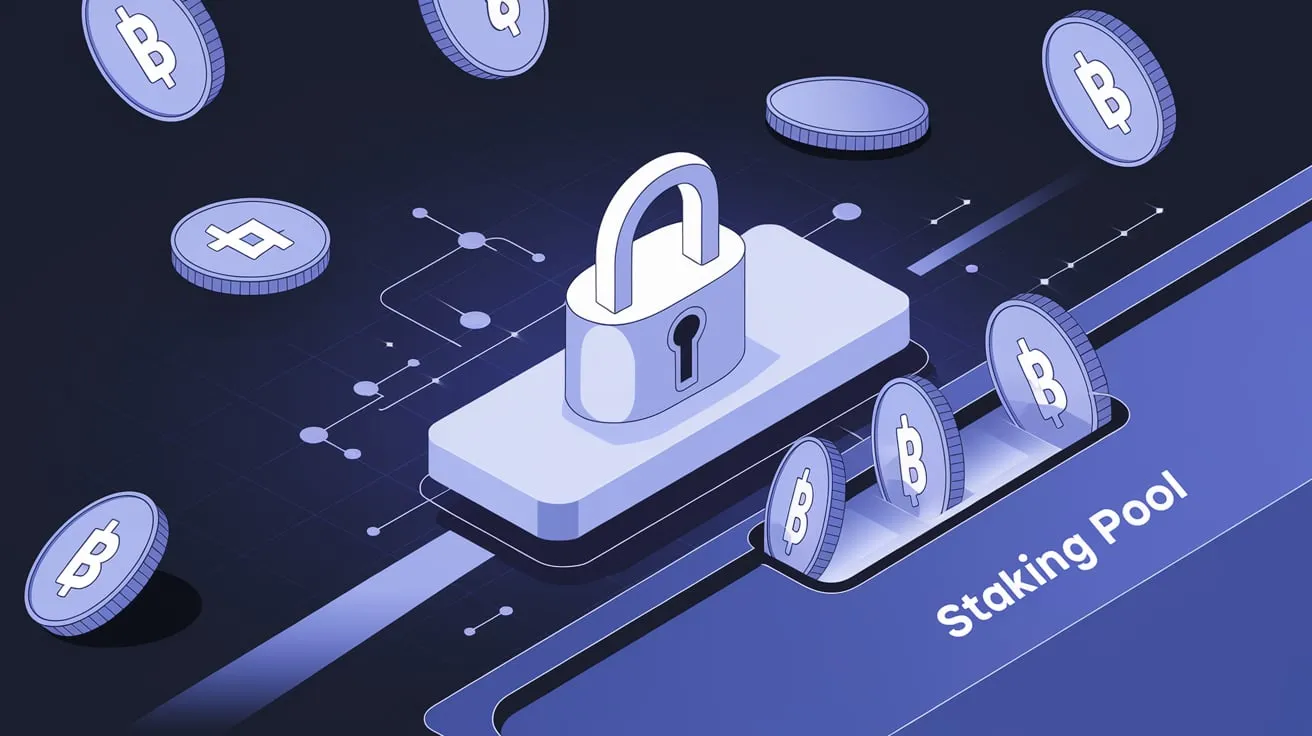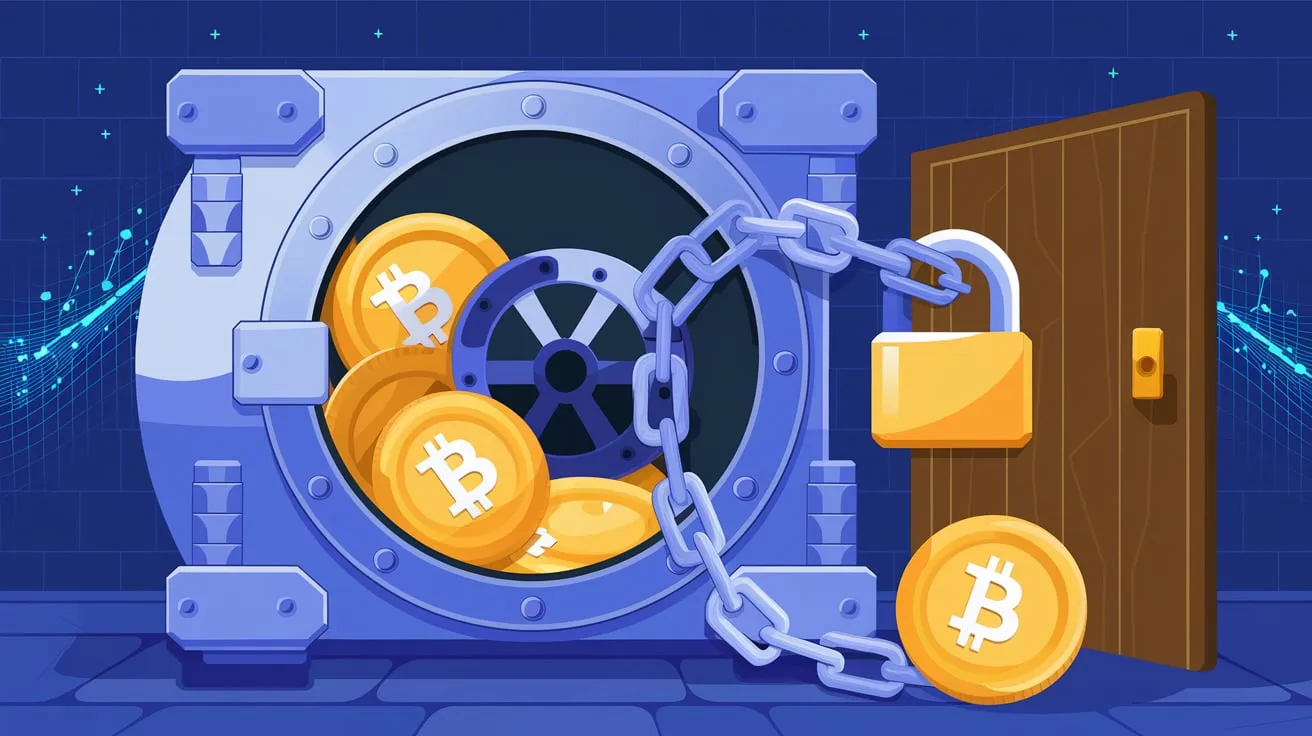
Did you know that DeFi staking provides an opportunity for users to earn money without stress? Investors in various DeFi staking platforms can receive rewards in the form of cryptocurrencies.
Learn how to use DeFi staking to earn passive income via participating in staking activities. This article will cover key points like how DeFi staking works and the best staking programs you can bank on.
After reading this article, you will discover various cryptocurrency staking platforms, advantages and drawbacks, and the different types of DeFi staking that are available for you.
What is DeFi Staking?
DeFi staking involves locking up cryptocurrencies in a decentralized DeFi protocol to support the operation of the blockchain protocol. In exchange for locking up your DeFi coins, you earn rewards in return.
These staking functionalities help make the blockchain secure and safe for validating transactions via Proof of Stake consensus mechanisms. Remember that you earn rewards based on the duration of your staking.
You can use various DeFi protocols such as Decentralized Exchanges (DEXs) or staking service providers to participate in the staking ecosystem. DeFi staking differs from regular staking which runs on a centralized exchange.
How Does DeFi Staking Work?
DeFi investors who want to earn rewards by staking can deposit DeFi tokens into a staking pool or smart contracts. These deposited funds are used by the blockchain to validate transactions and users get rewarded for participating in DeFi.
Note that rewards can vary depending on the amount used for staking and the network. It is important to know that there are risks like volatility and lockup periods associated with this staking process.
The Different Types of DeFi Staking
In the world of DeFi, there are different staking processes involved based on the risks, difficulty, and rewards. It is advisable to go for the one you are comfortable with. Here are the various types of staking across different DeFi platforms:
1. Validator Node Staking (Direct Staking)
This specific DeFi staking involves staking cryptocurrencies straight from a Proof of Stake (PoS) network by executing a validator node. It is the most popular type of staking in DeFi development.
To execute a node, a user must lock up a large amount of cryptocurrency as collateral and they receive staking rewards. Some famous networks that use this flexible staking are Cardano (ADA), Ethereum 2.0 (ETH), and Polkadot (DOT).
To start staking with this method, you need a large amount of resources and technical knowledge to execute a validator node and maintain it.
2. Delegated Staking
Delegated staking is for people who prefer a less complicated method. It allows users to delegate their digital assets to validators who can perform the staking for them.
The delegator gets rewarded for their staking experience while the validator earns a commission from it. This method is easier and does not require large funding or knowledge. Examples of platforms that run this method are Solana (SOL), Cosmos (ATOM), and Tezos (XTZ).
Users keep full ownership of their assets and can transfer them if they do not trust the validator doing the staking for them.
3. Liquid Staking
Liquidity staking enables users to keep their liquidity while staking their tokens. For example, users receive a tokenized copy of their liquid staking tokens which they can use in various DeFi apps while earning rewards for their participation in staking.
This type of token staking is very flexible and neutralizes the problem of liquidity assets during staking. Liquid staking is common because it allows users to benefit from staking while they use their tokens for other activities.
Platforms that engage in this type of staking are Lido for Ethereum staking, Acala for Polkadot staking, and Rocket Pool for decentralized ETH staking.

4. Staking-as-a-Service
This is an independent service that offers staking to users without having them delegate their digital assets in DeFi or become a validator. Crypto-staking users who use this method can stake their tokens via a third-party service that handles all the operations.
The service gets a commission from the staking rewards. Some platforms that offer this service are Coinbase, Binance, Bybit, and Kraken. This option is perfect for crypto enthusiasts who don't want the stress of handling their assets.
5. DeFi Platform Staking
Some DeFi platforms provide staking options for users to lock up their cryptocurrencies in a smart contract and earn the native tokens of the platform. This method is used for providing liquidity for crypto lending platforms and DEXs.
Popular DeFi staking platforms are Uniswap (UNI), Curve Finance (CRV), and SushiSwap (SUSHI). Engaging in DeFi staking platforms is a great way for users to earn rewards through governance staking.
How to Use Defi Staking to Earn Passive Income
To reduce the risks of losing your assets and increase your chances of earning staking rewards, here is how to use DeFi staking to earn passive income:
- Choose Reputable Platforms: Go for popular platforms that are reputable and secure with a good track record. Platforms like Coinbase, Binance, and Lido are the right DeFi staking platforms.
- Understand Smart Contract Risks: Be sure that the platform you choose has been audited by reputable companies. Furthermore, you can use insurance protocols like Nexus Mutual to protect yourself from contract failures. This is important because smart contracts can have weaknesses that may be exploited by attackers.
- Diversify Your Assets: Don't put all your eggs in one basket. Avoid staking all your tokens in a platform to increase your chances of losing everything when it fails. Diversify your investments across various platforms.
- Consider Liquidity and Lockup Periods: Select platforms that offer flexible and fixed staking withdrawal methods. Staking often involves locking up your tokens for a long time and this will give you better control of your assets during emergencies or market volatility.
- Monitor Market Trends: Stay updated on the latest trends and market conditions to know how your staked assets are performing. The cryptocurrency market is a volatile market that can see price fluctuation which can affect your staked funds.
- Start Small: If this is your first time in DeFi staking, it is common knowledge to start with a small amount of tokens and grow from there. This approach will help you understand how it works and the risks involved without using too much capital.
For more ideas on making money online, you can read this article that talks about 10 ways to make money in the Metaverse
Advantages of DeFi Staking For Crypto Investors

Just like crypto staking, there are several benefits of DeFi staking for crypto investors. Here are some of the advantages:
- By performing DeFi staking, you can earn extra tokens without having to do trading.
- Unlike crypto mining which uses a large amount of power, DeFi staking introduces a more energy-efficient method that is cheaper.
- Your staked assets are used to keep the blockchain safe and secure.
Since PoS blockchains are used for staking, they use fewer gas fees than normal blockchains like Bitcoin's Proof of Work (PoW).
Top DeFi Staking Platforms
To benefit from staking, here are the top DeFi staking platforms that can help you achieve your goal.
- Binance Staking: This exchange offers different types of cryptocurrencies you can use for staking with lucrative APYs.
- Coinbase: This is a platform that has a friendly user interface, making it a wonderful choice for first-timers in staking opportunities.
- Lido Finance: A staking platform that is decentralized. It offers users the opportunity to earn more crypto assets via Ethereum staking without becoming a validator.
- Yearn Finance: This is an advanced DeFi yield farming platform for expert traders. It allows users to earn more DeFi crypto rewards through advanced staking methods like yield farming.
Is Yield Farming different from staking? Click the YouTube Link to find out more about it.
Drawbacks of DeFi Staking in Blockchain
Although the potential of earning passive income is what makes DeFi staking attractive, several drawbacks should be taken into account. Below are some risks and limitations:
- Smart Contract Vulnerabilities: DeFi staking relies fully on smart contract execution, these are automated code snippets that can manage staking and distribute rewards. However, these code snippets can be exploited by hackers and users can lose their rewards. Popular audited networks have been known to experience security breaches in the past.
- Lock-Up Periods: Many DeFi staking networks lock up users' tokens for a fixed period and this can be an issue if the market price is falling or the user wants to solve an emergency. A longer lockup period leads to higher risks.
- Market Volatility: Tokens that are staked can be affected by market volatility. The rewards earned during the staking period depend on the market value of the token when the lock-up period is over.
- Slashing Penalties: In Proof of Stake (PoS) systems, delegators or validators can incur slashing penalties if there is improper or malicious conduct like double-signing transactions or going offline. This can lead to the loss of a percentage of the staked tokens for the user.
- Impermanent Loss (for Liquid Staking): When users perform liquid staking, they get tokenized versions of their staked tokens, which are usable in other DeFi activities. Nevertheless, this move can expose the user to impermanent loss which is a temporary loss that takes place when a token's price in a liquidity pool is diversified.
- Complexity for Beginners: The technical difficulty of DeFi staking can be discouraging for beginners and this can lead to errors like delegating tokens to untrustworthy validators or mismanaging the staking rewards and DeFi products.
- Regulatory Uncertainty: DeFi staking is a relatively new concept that is still growing, and stakers are liable to face unforeseen legal problems. For example, some nations have taxes for staking rewards which can affect DeFi operations. Regulatory uncertainty increases the chances of a DeFi staking protocol getting shut down or penalized.
Future of DeFi Staking
The future of DeFi staking looks great and will continue to attract more crypto users, and companies, and better technological innovations. DeFi staking may be marked by better liquidity via liquid staking, cross-chain interoperability, and complex security for top staking platforms.
Regulatory compliance and developments will also be an important factor in keeping the area dynamic and lucrative. As DeFi staking allows users to earn passive income, the security and operation of a blockchain system will be consolidated.
Conclusion
Using the several DeFi staking mechanisms listed in this article can help you generate income while supporting blockchain systems. Knowing how to use DeFi staking to earn passive income is a process that involves choosing the right platform that aligns with your goal and diversifying your assets.
Explore the best platforms like Binance, Lido, and Coinbase, and increase your chances of earning rewards from the crypto market.
FAQs
What are the risks of DeFi staking?
Risks associated with DeFi staking include market volatility, the possibility of smart contract weaknesses, and the loss of staked funds due to slashing (for PoS networks). Before staking, it's critical to assess the security features and possible profits of each platform.
Can you stake without using a platform?
Yes, you may run your validator node and stake without a platform. But this calls for a large amount of money and technical know-how.
Is DeFi staking taxable?
Generally speaking, staking rewards are regarded as taxable income. To find out how the laws in your nation apply to you, make sure you review them.
How do I choose the best DeFi staking platform?
Think about things like annual percentage yields (APY), staking costs, platform security, and the kinds of assets supported while choosing a platform. Binance, Coinbase, and decentralized alternatives like Lido and Yearn are examples of trustworthy platforms.




